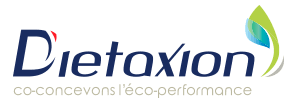
Dietaxion
DIETAXION ingredients for a better feed digestibility
In a context of constant increase of feed raw materials prices, DIETAXION offers feed ingredients that optimize feed digestibility.
PIDOLin PCa® (pure calcium pidolate) helps the transport of calcium and supports the bone structure. Recent studies showed that it is possible, thanks to PIDOLin PCa®, to strongly reduce the levels of phosphorus and calcium in broilers diets without negatively impacting growth performances or bone structure (Spain 2020; Argentina 2020; France 2021, France 2022).
BUTYLin 54® is a double buffered sodium butyrate. Its specific form enables a release of butyric acid from the first parts of the gut, supporting endogenous enzymatic secretions, the development of intestinal absorption sites and preserving the digestive integrity of poultry. Feed digestibility is improved, leading to better performances in broilers (France 2013; Thailand 2016; Indonesia 2016, Argentina 2019) and layers (France 2013, France 2022). DIETAXION has developed a matrix of formulation for BUTYLin 54®, opening a new approach with savings on energy and protein in broilers feeds (Argentina 2020).
In this context of high feed raw material prices, PIDOLin PCa® and BUTYLin 54® enables to save on phosphorus, energy and protein in broilers diets.
Contact us for more information: c.marecaille@dietaxion.com (Research and Development Engineer)
About DIETAXION
DIETAXION is a French private owned company located in Nantes.
It commercializes innovative active ingredients and optimizes their applications to create eco-performance levers intended for agricultural systems:
– Improve locomotion and animal welfare
– Stimulate immune defenses
– Preserve the intestinal health
– Optimize inputs on formulation
– Secured zootechnical and economical performances
DIETAXION promotes a virtuous cycle for a successful agroecological transition: produce with less inputs, efficient recycling of co-products and effluents, produce more protein at minimal carbon cost.

